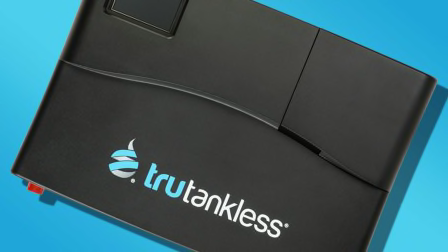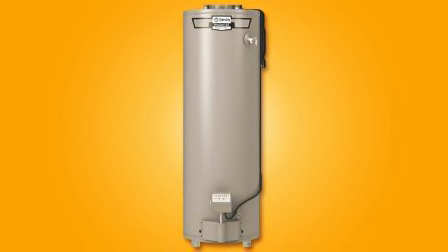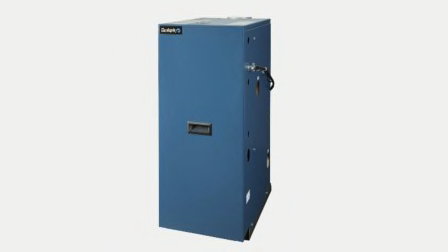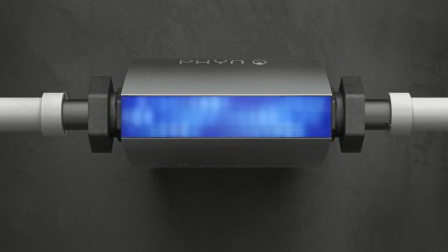How to Choose a Water Heater
Consider Energy-Saving Options Before You Need to Find a Replacement
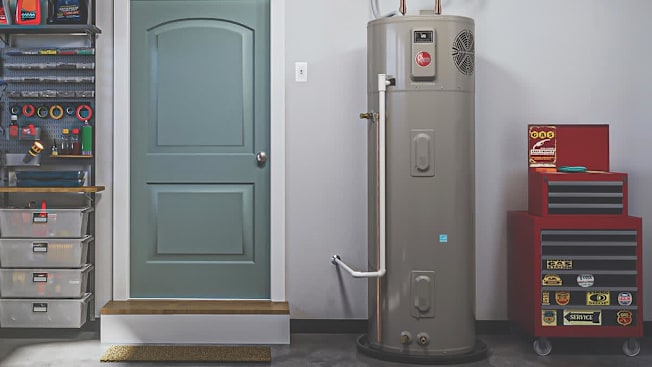
When is the best time to buy a new water heater? Hint: It’s not when the one you have fails.
But that’s what many homeowners end up doing. They notice a leak—or worse, they’re surprised by a flood—and are forced into a fast, high-pressure decision on which new water heater to buy.
That’s unfortunate, because after home heating, your water heater is typically the most power-hungry device in your house. That means the choice you make when replacing your water heater can have a significant impact on your budget, both in the near and longer term. According to the Department of Energy, water heaters represent as much as 18 percent of residential energy consumption. But if your water heater is an older-style electric resistance model, it probably accounts for about a quarter of your home’s electricity bill, says Joanna Mauer, deputy director of the Appliance Standards Awareness Project (ASAP).
- How to Compare Water Heaters
- Types of Water Heaters: Heat Pump Tankless Storage Tank
Regardless of the type of water heater you buy, a new one is likely to save you money over the one you’re replacing. For one thing, new standards issued by the Department of Energy in 2024 and scheduled to take full effect in 2029 have already spurred the introduction—and marketing—of more energy-efficient models. For example, heat pump water heaters already on the market meet or exceed the new federal standards, as do Energy Star certified gas tankless and gas storage water heaters, Mauer said.
But saving energy is only part of the which-water-heater-to-buy equation. High-efficiency water heaters typically cost more than old-fashioned tank heaters, and installation costs can also be high if you’re switching to an entirely new type of water heater. Your choices may be limited by the amount of space in your basement or mechanical room, and some types of water heaters might not deliver the quantity of hot water your household requires. Considering all these variables, it’s no wonder many homeowners put off water heater replacement. But as we’ve said, it doesn’t pay to wait. So here’s how to sort it all out, from how to compare water heaters generally to details on the types you’re likely to encounter as you shop.
How to Compare Water Heaters
Before you shop for a water heater, you’ll want to understand some basic terms that will enable you to compare their efficiency and performance.
Uniform Energy Factor (UEF): This is a measure of efficiency that can be used to compare water heaters of all types. It represents efficiency as a percentage, so the higher the UEF, the more efficient the model is. According to Energy Star, most traditional storage-type water heaters have a UEF of 0.63 to 0.95, meaning that the least efficient ones (typically gas-fueled models) waste nearly 40 percent of the energy they consume in order to supply you with hot water. Tankless models fare better, with UEFs of gas-fueled models ranging from 0.82 to 0.97. But heat pump water heaters are the winners when it comes to efficiency: Energy Star certified models have UEFs that range from 3.3 to 4.1, representing efficiencies of 330 percent to 410 percent. You can find the UEF of Energy Star certified heaters on Energy Star’s website and of other models in their manufacturer’s specifications.
First-Hour Rating (FHR): The first-hour rating refers to the amount of hot water a storage-type water heater (including heat pump models) will deliver in the hour after you turn on the tap. FHR is related to tank capacity, with larger heaters generally having a higher first-hour rating, but the heat source and type of heating element can also play a role. FHR can be found on a heater’s yellow Energy Guide tag and in the manufacturer’s specifications. Tankless water heaters are not rated for FHR; look instead for gallons per minute.
Size: If you’re replacing a current gas or electric storage-type heater, you can purchase the same size as the one you have, unless you’ve added another shower or bathroom in an interim renovation. If you’re switching to a heat pump unit, use Energy Star’s guide to find the size of water heater to buy (in gallons) based on the number of bedrooms and bathrooms in a house. Your installer can also help you choose the best size for your needs.
Connected Capable: WiFi, app, and grid connectivity are among the features available on new water heaters, as they are with many home appliances. Mostly, connectivity enables homeowners to easily track energy use and program controls such as vacation modes to reduce costs. Some states, including Oregon and Washington, have laws requiring that new electric water heaters be grid-enabled so that, with the customer’s permission, utilities can shift power use to periods of lower demand, such as overnight. In California, PG&E offers incentives to customers who switch to grid-connected heat pump water heaters that will allow them to schedule hot-water production to times when there’s less demand on the grid.
Heat Pump Water Heaters
A heat pump water heater looks similar to the storage tank heaters most of us are used to. But it contains a heat pump unit, usually on the top, that pulls heat from the air to heat the water. Most heat pump water heaters (sometimes called hybrid water heaters) also have backup electric elements that kick in at times of high demand, and which can be optionally disabled to stay in the most efficient mode.
Why buy one: The ASAP’s Mauer says heat pump water heaters are “conservatively” at least twice as efficient as traditional electric water heaters, with the most efficient ones using less than a quarter of the energy of an electric resistance water heater. Energy Star estimates that an Energy Star heat pump water heater will use about 70 percent less energy than a standard electric water heater, saving a family of four about $550 per year on its electric bills, and $5,600 over its lifetime.
Why not: The biggest barrier to switching to a heat pump water heater is higher up-front costs. Home Depot estimates a total cost, including installation, of $2,500 to $5,000. We found prices for 50- to 65-gallon heaters themselves (without installation) between $1,449 and $1,950; heat pump water heaters in our ratings range from just over $1,800 to more than $5,000. But federal, state, and utility incentives can defray those costs.
Incentives: Through the 2022 Inflation Reduction Act, Energy Star certified heat pump water heaters are currently eligible for a federal tax credit of 30 percent (up to $2,000) of a project’s costs. There are also state and utility incentives. For instance, New York State’s Energy Research and Development Authority offers a $1,750 incentive for those with incomes below 80 percent of the median. In Washington State, customers of Puget Sound Energy can save $750 on the purchase of a heat pump water heater and income-qualified residents can save $850.
What to know: Heat pump water heaters are available in both 240- and 120-volt versions; higher voltage models usually have an electric resistance element to optionally help heat more water faster when the tank is depleted. However, if you’re replacing a gas appliance and your utility space isn’t wired for higher voltage, 120-volt systems are still a good alternative even if they aren’t as fast, says Scott Cohen, director of marketing for Rheem, one of the nation’s largest water heater manufacturers.
You might also have trouble fitting one in your mechanical room: Heat pump models with the compressor mounted on top are taller than standard water heaters and need a slightly larger tank to provide the same amount of hot water. Note that some models offer side connections to compensate for the extra height, and our top-rated model, the Sanden SanCO 2, is a “split system” in which the heat pump can be installed at a distance from the tank (including outdoors). Indoors, heat pump models require a certain amount of airspace to operate efficiently, as well as a drain or pump to remove condensate. They are noisier than standard tank heaters, and the heat extraction process can chill the space they’re placed in.
Considering a heat pump water heater? Here are the best from our tests.
Tankless Water Heaters
While tankless, or “on-demand,” water heaters were once the go-to for efficient water heating, they’ve been largely displaced by heat pump water heaters. As their name implies, tankless water heaters don’t store water in a tank. Instead, they rapidly heat water as it passes through a heat exchanger, which eliminates the standby energy losses you get with a storage tank. Most run on natural gas or propane, with a small portion of the market powered by electricity. Tankless units are compact and are typically mounted on a wall.
Why buy one: Gas-fueled tankless water heaters are more efficient than gas storage tank heaters. They fit in very small spaces, and if you have a large household with high hot-water demand, they’re worth considering. Newer models can attain a UEF as high as 0.98 using condensing technology similar to that of condensing storage gas models, which are described below.
Why not: The initial installation of a tankless water heater can be costly. Home Depot, for example, estimates the total average installed cost of a tankless heater at $4,300, and higher if you’re switching from a traditional tank heater. As for the unit itself, we found units that ranged in price from about $800 to $2,600, with prices rising for models that provide more gallons per minute.
Incentives: Gas tankless units with a UEF of 0.95 or higher can qualify for a small tax credit of 30 percent on project costs up to $600. There are also some fairly generous utility and state incentives, though these vary widely, from a few hundred dollars up to $900. Note, however, that utilities in some states, such as Massachusetts, are phasing out rebates on fossil fuel equipment to cut carbon emissions.
What to know: Because tankless units don’t store water, their output is rated by gallons per minute, which is where the idea of “endless hot water” comes from. That number will vary based on the temperature of the water coming into your house, so be sure you’re comparing GPMs that reflect the same temperature rise. Users also need to be mindful that “endless” hot water can be costly if abused, says Max Rohr, director of education at Caleffi Hydronic Solutions, an international supplier to the plumbing industry. “There have been some cases where people will take a 45-minute shower when you would have hopped out of the shower as it cooled with a tank model that runs out of warm water,” Rohr says. And tankless heaters are not maintenance-free; Rheem’s Cohen says that especially if your home has hard water, you’ll want to descale the heat exchanger annually. And if you live in a cold climate, you may need two units to bring water up to the desired temperature.
Storage Tank Water Heaters
You can still find traditional storage tank water heaters fueled by natural gas, propane, or electricity that continuously heat water, keeping a full tank stored at the ready. The bad news is that you’re paying to keep that water heated whether you need it or not.
But there is some good news. First, there’s a whole class of Energy Star certified, high-efficiency gas water heaters that—thanks to improved insulation, heat traps, and more efficient burners—use 8 percent less energy than standard models. Some, called condensing water heaters, utilize hot exhaust gases to boost their effectiveness.
Storage tank water heaters typically have a capacity of 30 to 80 gallons; the capacity you want depends on the size of your household and how much hot water you use (a plumber can help with the calculations).
Why buy one: If there’s one positive to sticking with a standard electric or gas unit, it’s the relatively low cost of purchasing and installing a new one. We found 50-gallon electric units selling for as little as $500; Home Depot estimates an average total installation cost of $1,950, including the unit. And if you’re replacing like with like, the new heater should fit in the same space as your old model (though a condensing unit may need specialized venting).
Why not: Sticking with a storage tank water heater means paying less now and more later. Despite the lower up-front costs, choosing a traditional electric-resistance tank water heater over a hybrid heat pump water heater will cost you approximately $3,000 more to operate over 10 years, according to Home Depot. Because the DOE predicts the average life of a storage water heater is about 15 years, you’re locking yourself into paying at least that much more over time.
Incentives: Energy Star gas units that are 55 gallons or less with a UEF of at least 0.81 are eligible for a tax credit of up to $600 off the total cost, including installation. Using Energy Star’s incentives search tool, we found a range of utility incentives as well. There are no incentives for conventional electric storage water heaters or for gas storage models lacking newer condensing technology.
What to know: If the DOE’s new standards go into effect, they will largely eliminate the production of new electric-resistance water heaters larger than 35 gallons (those smaller, apartment-sized units will remain available). “Changing the rules will take a big chunk of the electric market, and while they are not going to explicitly say so, it requires [any new water heater] to be a heat pump water heater,” says Rheem’s Cohen.



























